| Highlights  NOAA has announced the Middle Peninsula, an area on Virginia's Western Shore, as the eleventh NOAA Habitat Focus Area. The area provides important habitat for economically and ecologically important fish and wildlife, but it is experiencing significant effects from climate change. NOAA and partners will focus on restoring and conserving fish habitat, assessing the economic effects of restored and existing habitats, enhancing coastal resilience, building regional restoration and resilience capacity, and engaging communities in NOAA science. NOAA Habitat Focus Areas are places where NOAA brings partners and communities together to work on mutual habitat conservation goals. Contact: Andrew Larkin. | 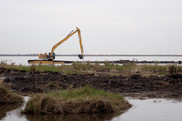 NOAA and partners recently began construction on a massive 1,200 acre marsh creation project in Louisiana's Barataria Basin. The $151 million project will create habitat, reduce erosion, and protect communities. This will be NOAA's largest wetland restoration project. The project was approved by the Deepwater Horizon Louisiana Trustee Implementation Group to restore habitats impacted by the 2010 oil spill. Contact: Mel Landry. | 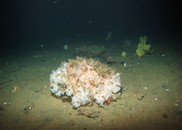 NOAA scientists and collaborators have found rare deep-sea sponge mounds between two of California's most explored marine protected areas, within the Channel Islands National Marine Sanctuary. This discovery and subsequent research is helping scientists understand more about the life cycles of deep-sea sponges and to determine which fish species are associated with them—work that is contributing to ecosystem-based fisheries management. Contact: Dani Weissman. | 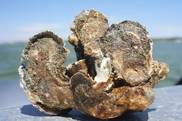 Partners working to restore healthy oyster reef habitat in the Chesapeake Bay recently released a report with compiled statistics through the end of 2021. To date, 1,220 acres have been restored out of the 1,770 acres targeted for restoration toward the Chesapeake Bay Program's goal to restore oysters in 10 tributaries by 2025. Contact: Stephanie Westby. | 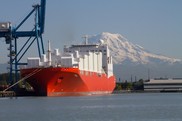 The Commencement Bay Trustee Council released a draft restoration plan proposing to spend $1.1 million to implement two habitat restoration projects on Clear Creek, in Pierce County, Washington. If approved, the projects would restore fish passage and improve wetland habitat for salmon, steelhead, birds, and other fish and wildlife in the area. These resources have been impacted by a history of contamination in the Commencement Bay area. Contact: John R. Floberg. | | | Habitat Across NOAA 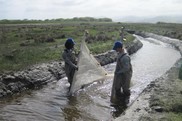 NOAA Fisheries shared its first-ever draft Equity and Environmental Justice Strategy and invited public comments through August 19. In addition to accepting written comments, we will host four webinars on the strategy, where comments will be accepted. Additional in-person meetings and opportunities to comment via phone will be announced on a rolling basis, once those plans are finalized. | 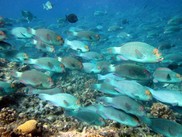 NOAA Fisheries scientist Tye Kindinger explains how identifying the best algae-grazing fish in the Pacific region can help fight against algae overgrowth and promote recovery of distressed coral reefs. She works in NOAA Fisheries' Pacific Islands Fisheries Science Center and researches how reef fish help protect corals from the adverse effects of climate change. |  The Infrastructure Investment and Jobs Act contains $2.96 billion over five years in future NOAA investments to advance "climate smart, climate ready, and climate resilient" infrastructure. Much of this funding will be passed to the state coastal zone management programs and research reserves for projects such as wetland restoration in Texas, planting marsh grass in New Hampshire, and rebuilding dunes in Washington. Lessons learned from these projects will provide value, insight, and preparation for future projects. | | | Announcements  Join us the week of May 16 - 21 as we celebrate World Fish Migration Day‒a global celebration to raise awareness on the importance of free flowing rivers and migratory fish. Learn more about how NOAA helps migratory fish and communities by opening or improving access to river and stream habitat. | | | | |
